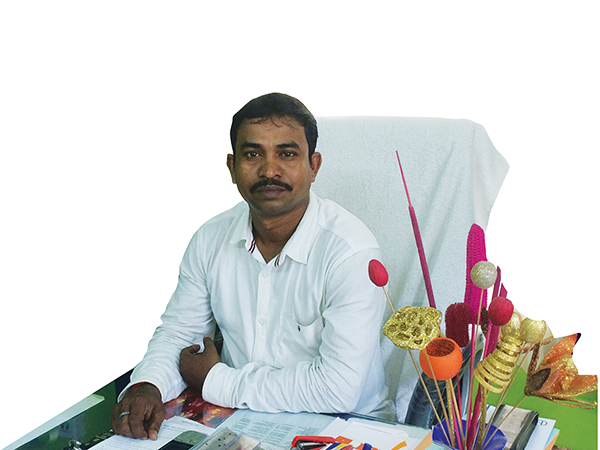Urban centres in India have faced immense pressure caused by inward migration from rural and semi urban areas. Promise of better livelihood lead many to migrate to urban centres. A majority of the population that migrates belong to the economically marginalised sections and are forced to live in shanties and slums. The situation in Kolkata is no different. Though the city does not have a slum as extensive as the one in Dharavi in Mumbai, a large section of the city’s marginalised population resides in various slums, which are scattered across the city and are located on government and railway land.
These slums are often sites of gross human rights violations and criminal activities. The population remains extremely vulnerable. Reports of entire slums being destroyed by fires have surfaced time and again in Kolkata’s leading dailies. Such fires have led to wide scale destruction of life and property for these slum dwellers. Many of these slums remain out of the ambit of basic civic amenities. Electricity remains a pertinent problem in these sites of urban deprivation. Since many of the dwellers have no legal rights associated with their dwellings, securing an electricity connection is an issue. Therefore, rampant electricity theft is a common feature of these slums.
Case Studies
The Natun Pally and the Dhopar Math slums are known as one of the most fire-prone areas of Kolkata. These slums have caught fire thrice already and were almost ruined. Sanitation and water supply remain a perennial problem. Most of the dwellers depended on electricity theft from the overhead electrical lines. A CESC official on conditions of anonymity informed BE that the company sustains high losses due to electricity theft from the area. Such unaccounted loss of electricity puts pressure on the suppliers and results in frequent power cuts in adjacent areas. There is an acute problem of water. There were just 20 taps for almost 2000 people. People living in these slums earn their living by working as domestic help or are mainly employed in low paying jobs in the informal sector. Most of these dwellings do not have toilets. This has led to open defecation. Loss of privacy is another associated problem with the lack of sanitation.
The Duttabad slums in Bidhannagar have their own set of problems. Most of them are similar to that of Notun Pally and Dhopar Math. These slums stand in stark contrast to the up market residential township of Bidhannagar. Many of the civic amenities that are taken for granted in Bidhannagar elude the Duttabad slums. It is ironic that many of the residents in these slums were the original inhabitants of the region on which the planned township was later built. As the suave ‘planned’ city came up, its original residents were pushed to the fringes. Devoid of their trade, which was predominantly fishing, this section was forced to live a life of deprivation and distress.
Governmental response
The government has been proactive in providing better amenities to this extremely vulnerable section. The slum residents have also acted as a pressure group on the local representatives, wielding their collective electoral strength.A significant improvement of the Natun Pally and the Dhopar Math slums has been ensured by the rapid implementation of the Pradhan Mantri Awas Yojana. Many of the erstwhile slum residents have been shifted to the newly constructed buildings housing 1BHK flats of 270 to 300 square feet area. Speaking to BE, Shanti Ranjan Kundu, Councillor, Ward No 32, Kolkata Corporation, informed, “We faced several problems while initiating the project in this area. Initially the people of the slums felt that the government is trying to take away their land and they will be left with nothing. They were protesting under the leadership of local clubs. With the guidance of Sadhan Pandey who is the Minister of Consumer Affairs department, I could take them into confidence.”
Building the housings and the benefits
The governmental scheme is providing 1BHK flats that have one bedroom, a kitchen, a bathroom, and a balcony. According to Arati Sardar who has shifted to one of these flats, “We are getting a proper place to live after so many years. We are being allotted floors through a lottery system and no one is complaining.”
Kundu informed BE, “The housings are being built in phases. At the beginning of any phase, the numbers of families are counted. Accordingly the land is acquired. Only that amount of land is vacated which is needed to build the housing for that specific number of families.”
Pratima Sardar is yet to get possession of her flat but she is seeing her neighbours and is eagerly waiting to move in. She informed BE that the flats would provide her a living condition that is much better than their previous dwellings, which were makeshift structures made of cane and asbestos. This project is giving them the opportunity to live a healthy and proper life. Tumpa Das who has recently moved into her flat informed, “We have finally got a house, which has its own toilet and private meter for electricity.”

There is scope of doing a lot of work. I am presently working on providing better amenities in terms of sewage, electricity and drinking water. Sanitation is another aspect which I am looking into. I have received full support from my leader and local MLA Sujit Bose.
— Nirmal Dutta, Councillor, Ward 38
Bidhannagar Municipal Corporation

The CESC has helped us by giving out meters at the least possible rate. These flats have their own assured water supply. Most of the quarrels took place around the common water tap. Even the school dropout rate is going down. I believe it is linked to reduced insecurity and inferiority complex, which was associated with living in the slums. The children are able to bring their friends home in spite of the occupational disparity of their parents.
— Shanti Ranjan Kundu, Councillor, Ward No 32
Kolkata Corporation
Add new comment